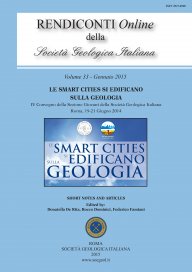
Tracing NAPLs contamination in the vadose zone using soil radon
Paola Tuccimei (*), Gabriele De Simone (*), Pierpaolo Curatolo (**), Riccardo Giorgi (**), Carlo Lucchetti (*), Mauro Castelluccio (*) & Angiolo Calì (**)
(*) Dipartimento di Scienze, Università di Roma Tre, Largo San Leonardo Murialdo 1, 00146 Roma, Italy. E-mail: paola.tuccimei@uniroma3.it
(**) Golder Associates, Via Sante Bargellini 4, 00157 Roma, Italy.
Volume: 33/2015
Pages: 100-103
Abstract
Frequent spills of Non-Aqueous Phase Liquids (NAPLs), such as petroleum products or chlorinated solvents, occur all around the world contaminating the soil vadose zone or the aquifer. In order to trace the presence of these substances, radon concentration in soil gas can be employed because of its high solubility in NAPLs. Radon available in the soil pores accumulates in the NAPLs producing a local decrease of its concentration in the vicinity of contaminated areas. Thus radon minima in the vadose zone can be used to localize NAPL plumes indirectly.
The suitability of this method is here checked by laboratory simulation of a gasoline spill within a known volume of soil. Radon activity concentration strongly drops down right after the injection of gasoline and progressively increases in the following days. This trend is compared with data from a simultaneous experiment carried out on a volume of the same soil, not contaminated by NAPL.
Finally, an example of field measurements within a site affected by NAPL contamination is documented. Mapping of soil radon concentration at 80 cm depth shows an area where radon deficit is evident. This region is aligned along the directions of the groundwater flow induced by pumping for safety operation of the plant. Radon negative anomalies are not due to low gas permeability and are not correlated with soil CO2. The comparison of soil gas data with those from nearby background areas confirm the soundness of premises.
Keywords
Get Full Text